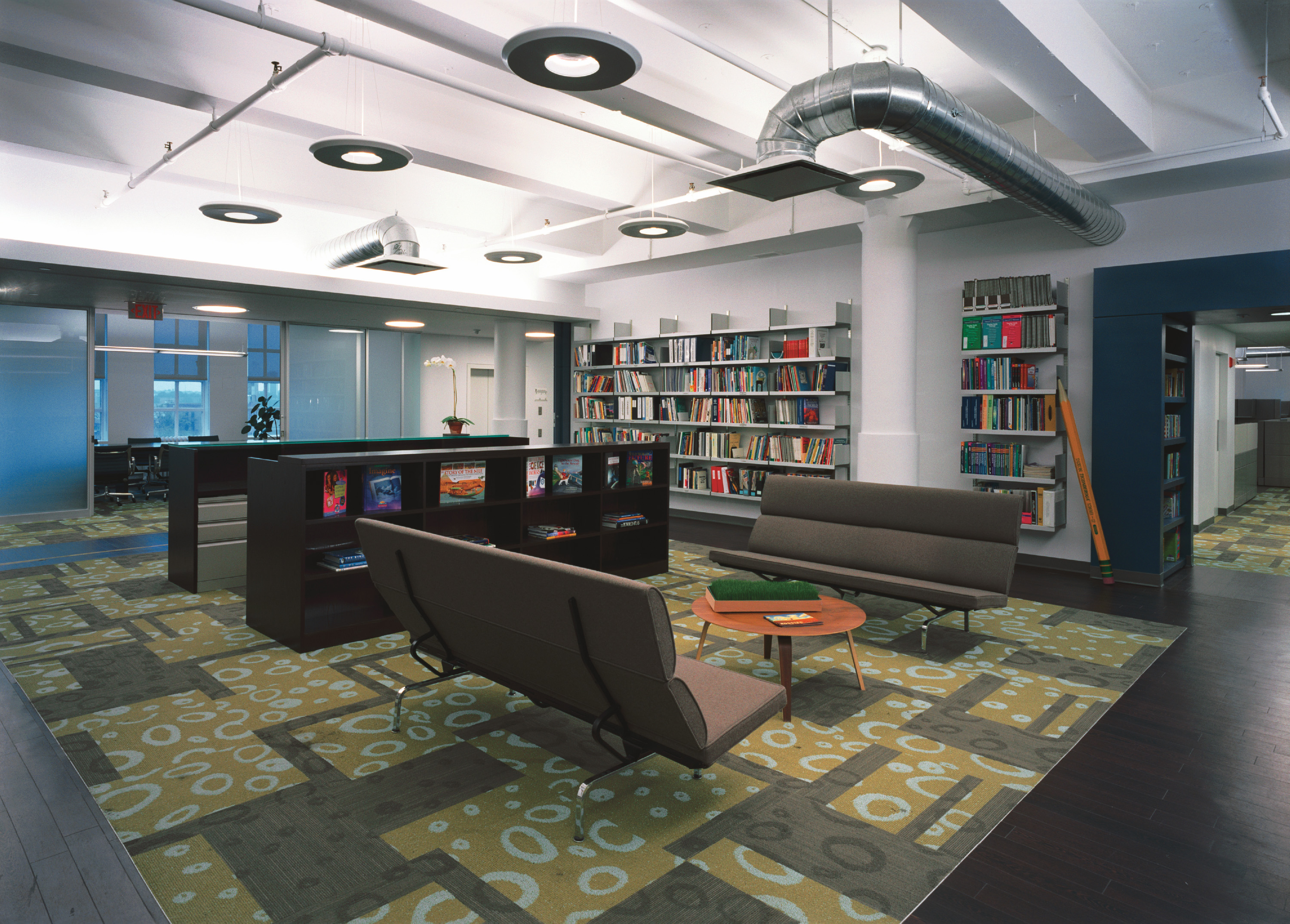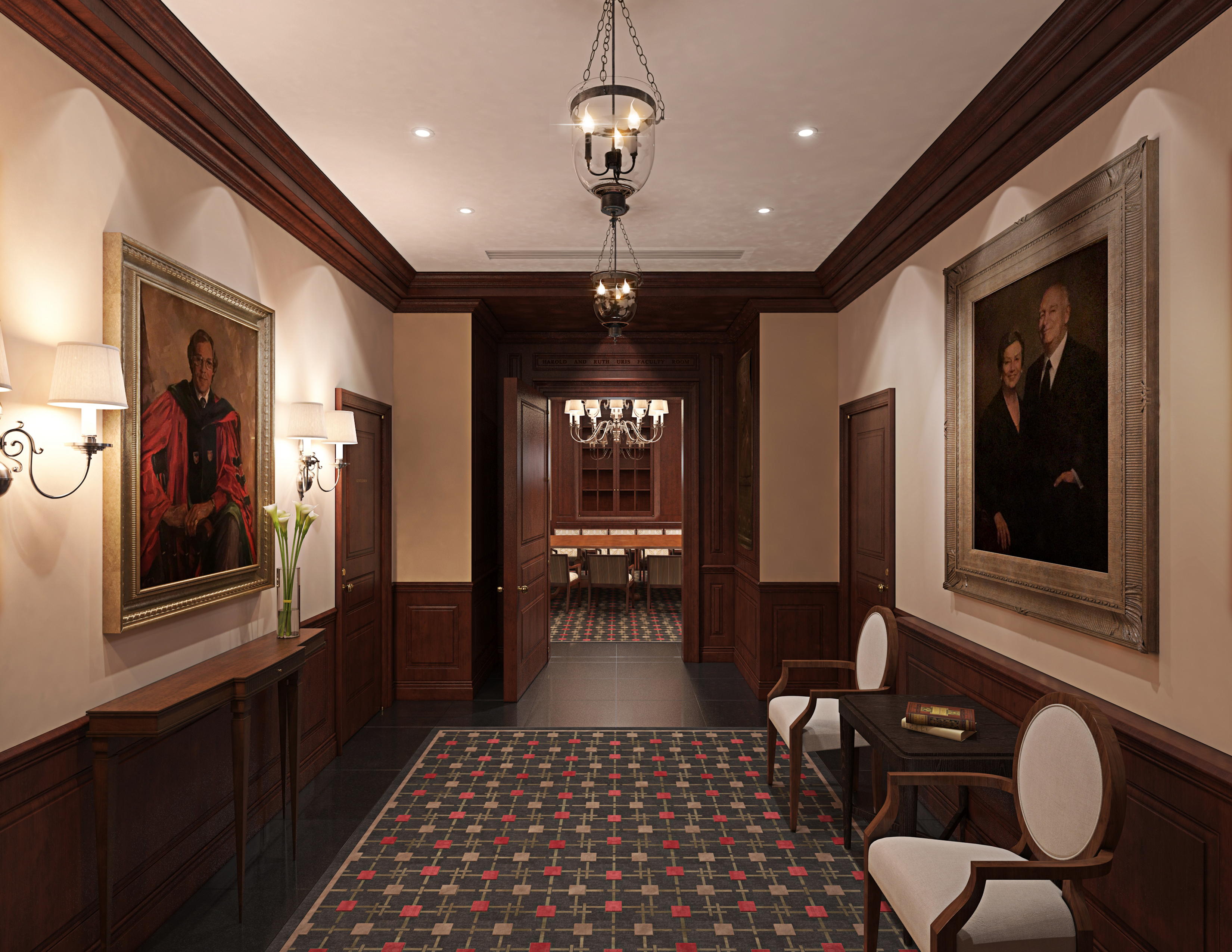by: Alexander Luckmann
Over the course of her 40-year career, Mary Burke, FAIA, has led projects in architecture, interior design, and historic preservation on multiple continents and for a range of firms. She is currently the principal of her New York-based firm, Burke Design, and an Adjunct Associate Professor at the Pratt Institute. She previously served as Director of Interiors at both CetraRuddy and Gruzen Samton, and for five years directed a previous incarnation of Burke Design in Singapore. She has held senior roles with other firms including HOK, Swanke Hayden Connell Architects, Kohn Pedersen Fox Associates, and Tihany Design. In addition to her professional and academic positions, Burke previously served as Vice President for Public Advocacy at AIA New York State, and has held various other roles in the local, regional and national AIA. Here, she reflects on her winding path through the world of architecture.
Q: Who or what influenced you to become an architect and interior designer?
A: Let’s say “other.” Instinct? Intuition? I wasn’t one who wanted to be an architect from an early age. I didn’t know what an architect did. I didn’t know how to draw. I had seven siblings, six of whom were English majors. I came from a world of words and fully expected to become an attorney. As a part of one of the first classes of women at Fordham University we were all assigned to art history classes—women study art history—and I began to get a sense of something other. I began to realize that though I had no background or training in anything visual, I saw something else and understood it. I had a natural ability to comprehend space, volume, and form in a very different way from my classmates. I changed my major first semester of junior year from Political Science to Art History and finished all the required course work in the remaining three semesters. I got into grad school at Columbia on an essay and was told that I was provisionally accepted as long as I learned to draw. I took the equivalent of “Drawing for Dummies” and was excused three weeks later. I guess I always knew how but no one ever asked me to, like a child who doesn’t speak until the age of five but when he does he speaks in complete sentences. I just started drawing, and the rest was history.
Q: In your distinguished career, what moments stand out as formative for your current design practice?
A: Several moments, the first being having the great fortune to find myself assigned to a project under the supervision of someone who would become my mentor and greatest supporter, William D. Wilson of The Gruzen Partnership. Bill took the time (and had the time) to teach in a way that is now rare, in a way that I try to emulate as a practitioner and a teacher. He taught what it means to be an architect and a designer, to be allowed to grow and flourish and learn to take the lead—and have the gift of someone who always supported you, even when you were wrong (and do a gentlemanly scolding later in private). The second moment was during my time with KPFIA (Kohn Pedersen Fox Interior Architects), being asked to go to Singapore on a four to six week assignment that became six years. Being willing to take a risk for a learning experience that can’t be matched, regardless of the complications. The third, not so much a moment as a realization as I’ve gotten older, is to follow your instincts and say no if it isn’t right.
Q: You have practiced both abroad and in the U.S., as design director—in large firms and as principal of your own practice. What have these experiences taught you about leadership in the design world?
A: In both settings, you learn responsibility to a larger good than your individual welfare but—big but—you also understand that there’s a big difference between being a part of a firm and running your own practice. It’s something you’ll never forget, even if you become a part of a firm again: it’s called stewardship. Second, working abroad teaches flexibility and adaptability in accomplishing your design aspirations that transcends geographic limitations—and makes you think very differently. There are no borders any longer—just finding common ground to realize the best result.
Q: You have a longstanding involvement with the AIA, as a former chair of the Interior Architecture Committee, VP for Design Excellence of the AIA New York Chapter, and VP for Public Advocacy of AIA New York State Board of Directors. You have recently been appointed to the National College of Fellows Jury for 2018-21. What do you find most valuable about your engagement with the AIA?
A: The value is involvement and connecting with colleagues who share a common goal but bring a diversity and texture to the practice of architecture. The AIA exists to support the value of design; to provide structure (however real or virtual) to allow members to find support and collaboration, and to flourish in their various areas of practice; and—very importantly—to craft a message that speaks to a larger audience about the value of design and the critical role that we as architects play in delivering that value.
Q: You work across the three disciplines of architecture, interior design, and historic preservation. How do these fields cross-pollinate and inform each other in your practice?
A: I don’t distinguish among them—each is integral to a design continuum. Each requires a sensitivity, and informs the others. Each one has implications for the other: an architecture that enables a rich interior environment and beneficial occupancy; preservation projects that respect a building’s passage through time and adapt to new uses; an interior that responds to the architecture and allows the building envelope to guide in realizing the needs of the end user.
Q: You have taught at the Pratt Institute for over a decade. How has teaching influenced your design practice, and vice versa?
A: With the privilege of this profession comes the responsibility to pass it on. Teaching has allowed me to consider the nature of practice and how it has changed over the years, and affords the opportunity to pass along lessons learned. We all remember what it was like that first day on the job, and anything I can do to make that transition from student to professional smoother and more beneficial is doubly rewarding, both to them and to me. It makes me very proud to see how my students have grown into professionals. At the same time, my students keep me connected to an ever-changing world, putting a very new spin on practice.
Q: As someone with deep familiarity with New York as well as other parts of the world, what do you see as the challenges and opportunities for New York over the next decade?
A: The biggest challenges have been and remain how to manage growth and change, and preserve a livable city. Change is inevitable. We need to balance to City’s success as a world-wide magnet with efforts to preserve the character, vitality and diversity of our rich environment, to continue to welcome newcomers, and avoid the creeping homogeneity that seems to advance day by day, block by block—driving out the very people who helped make that iconic city, and who no longer can afford to be a part of it.














